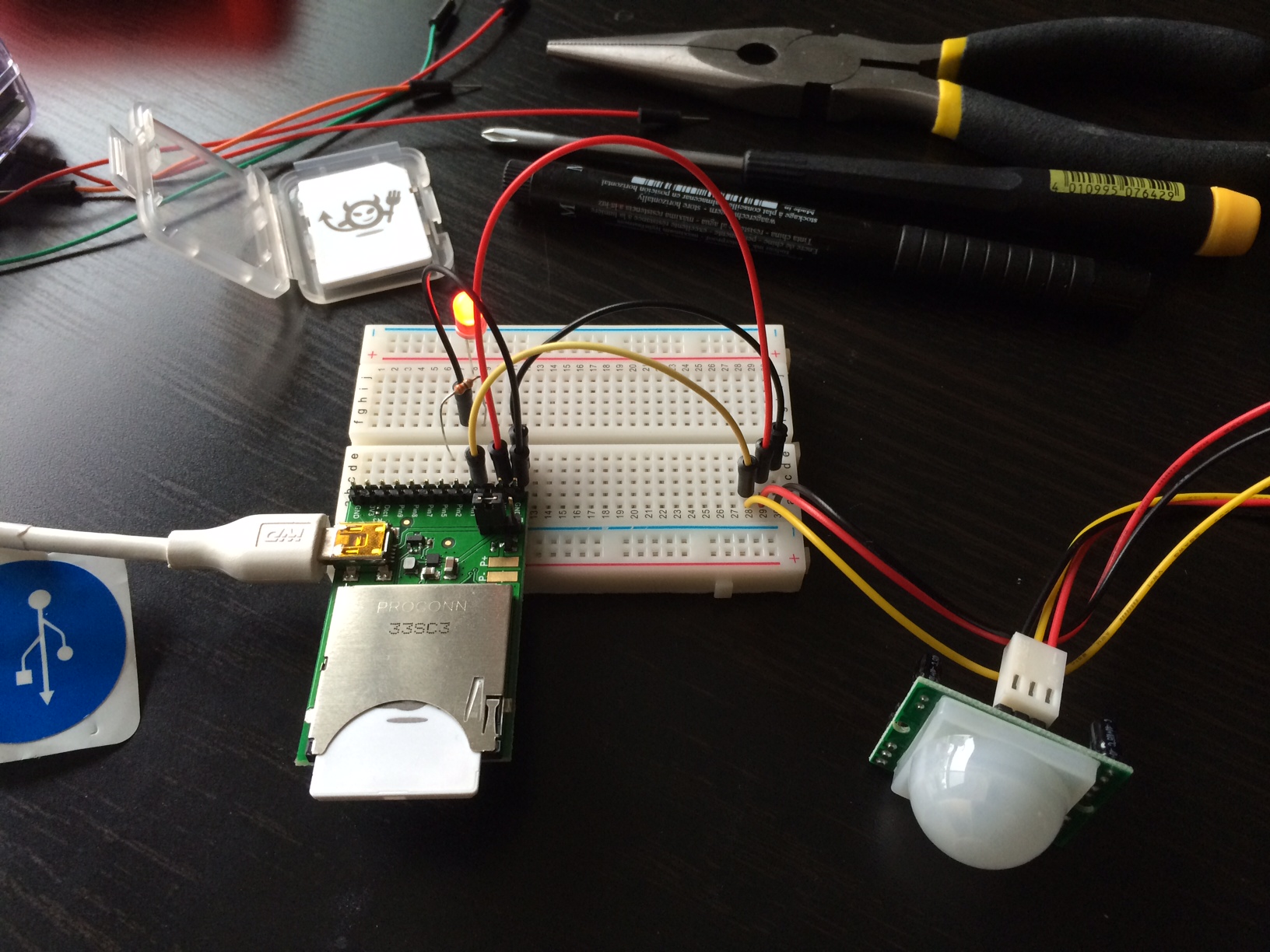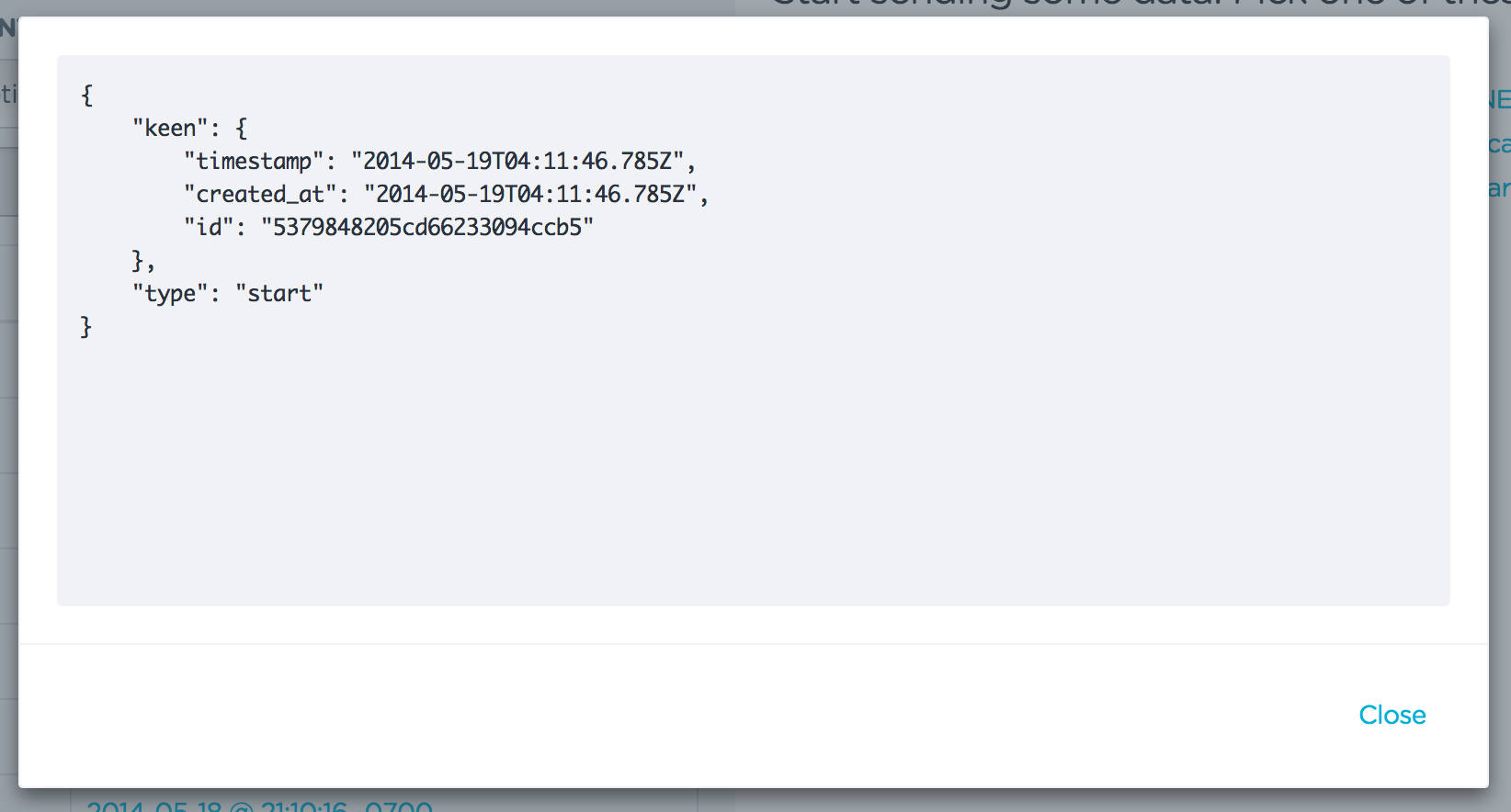A simple Electric Imp device that uses Keen IO to track my sleep schedule
In a nutshell, my device is just a simple passive infrared (PIR) sensor connected to the Imp card, which in turn talks to Keen IO. The PIR sensor is a relatively cheap ($10) motion sensor that detects changes in infrared radiation levels (e.g., human movement) within 20 feet. If well-placed in your home, a PIR sensor can tell when you're active and when you're not. For me, long periods of inactivity correlate to the times when I'm sleeping or at work.
This repo covers, in order:
led_blink, an Electric Imp "hello world" with a blinking LED.pir_sensor, which uses log statements to test the functionality of a PIR sensor.pir_events, where basic motion event data is sent to Keen IO.- dashboard (
main.jsandindex.html), where data is visualized.
Materials I used: Electric Imp card and an April breakout board, a breadboard, some wires, a USB mini cable, a 330-ohm resistor, an LED (or several LEDs), a PIR motion sensor, and a free Keen IO account.
Electric Imp has a great tutorial to help you get an LED blinking – the Imp equivalent of “Hello world!” To get going, you'll only need your Imp card, April board, LED light, and a resistor.
Pro tip: If your Imp isn't connecting to your Internet network, double check that your wifi password is correct. (Electric Imp won't cue you into the fact that your password is incorrect).
To get your PIR sensor connected, check out these pages on setup and testing.
There are six basic steps for this part:
- Connect the attached red wire to VIN on the April Board.
- Connect the black wire to the GROUND, right next to VIN.
- Connect the remaining wire to PIN1.
- Write your Squirrel device.nut code.
- Write your Squirrel agent.nut code.
- Click "Build and Run" in your Imp IDE and check the logs. (You may need to reload the page).
For specific information on configuring digital pins, I used these two pages from Electric Imp's dev center. I also used codegirljp's advice with regards to using pin1 and DIGITAL_IN_WAKEUP.
Sending your event data to Keen IO only requires a few small changes to the pir_sensor code, detailed above. To begin, take a look at Keen IO's getting started guide and this super helpful keenio agent.nut.
- Create a free Keen IO account and login.
- Create a new project on Keen IO.
- Add a snippet of Keen IO's code to your agent.nut code.
- Add your Keen IO Project ID and your Keen IO Write API Key to your agent.nut code.
- Confirm that your device is still connected to your agent (e.g.
agent.send("motion", pir_state);in device.nut anddevice.on("motion", function (state) {in agent.nut). - Click "Build and Run" in your Imp IDE and check the logs. (You may need to reload the page).
Note: Event meta data logged to Keen IO includes "timestamp", "created_at" and "id".
##dashboard For this project, I put together a dashboard that helps me quickly see the motion recorded in my home. The graphs show periods of activity in a 24 hour time period. I created the graphs using the timeline chart from Google, and doing a bit of data massaging to get Keen IO’s data to work with the charts.
Electric Imp code is written in Squirrel. For a Squirrel Sublime Text highlighter, check out: https://github.com/micheg/sublime_squirrel


